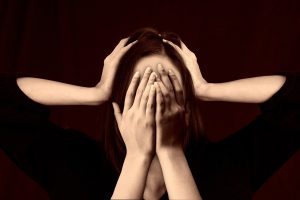Have you been feeling bloated, nauseous, or experiencing an unusual amount of stomach pain? These could all be signs of an infection caused by the Helicobacter pylori (H. pylori) bacteria. H. pylori is a common infection that affects the stomach and small intestine. It is estimated that up to two thirds of the world’s population has been exposed to H. pylori, and many may not even know they have it. The good news is that with the right treatment, it can be easily cured. It is important to know the signs of H. pylori infection so you can seek help as soon as possible. Read on to learn more about the signs and symptoms of H. pylori infection.

What is H-Pylori?
H. pylori is a type of bacteria that live in the stomach. It is a very common infection that can cause inflammation and damage to the stomach lining. This can lead to a variety of symptoms, including pain, bloating, nausea, vomiting, and even ulcers in some cases. While most people will experience no symptoms, it can be very serious in those who are more vulnerable, such as the elderly and children. It is estimated that about half of the world’s population has been infected with H. pylori. H. pylori is transmitted when people consume food or drink that has been contaminated with feces. It can also be spread through close contact with infected people. H. pylori is more common in areas with poor hygiene, but anyone can get it. Good hygiene, including thorough hand washing, can help prevent the spread of H. pylori
Common symptoms of H-pylori infection
As mentioned above, H-pylori is a very common infection, and most people will experience no symptoms at all. However, in some cases, it can cause serious illness. Here are some common symptoms of H-pylori infection:
- Abdominal pain – This will usually occur in the upper abdomen, just below the ribs, and can range from mild to severe.
- Bloating – This is the feeling of swelling and increased fullness in the abdomen. It can occur even when you are not eating.
- Nausea – This is the feeling of having a sickness in the stomach that can lead to vomiting.
- Feeling sick – This is a general feeling of being unwell, often with a headache and achy muscles.
- Loss of appetite – This is the feeling of not being hungry despite not having eaten for some time.
- Dark or tarry stool
- Diarrhea
Anemia (low red blood cell count)
Decreased or loss of appetite
Chronic malabsorption (from lack of acidity in the stomach)
Duodenal/Peptic ulcers
Carcinoma
Risk factors associated with H-pylori infection
There are a few factors that increase your risk of developing an H-pylori infection. These include:
- Being exposed to someone who is infected
- This can happen through close contact with others, such as when eating with utensils that have not been properly cleaned.
- Having a low immune system
- This can be caused by diseases such as HIV, poor diet, certain medications, or other factors.
- Having certain risk factors inherited at birth
- This includes having a parent or other close relative who has had an H-pylori infection.
- Living in an area with poor sanitation
- This includes places without access to clean water and proper disposal of waste.
Testing for H-Pylori
Several approaches to ascertain the presence of a H. pylori infection exist. We have listed the main ones below. Our experience has been that a DNA stool test is the most dependable, even though it is susceptible to false negatives, like all of the other methods.
- Stool Test
- Endoscopy
- Breath Test
- Blood Test
H-Pylori Diet
It is not feasible to eliminate H. pylori just through diet, yet we can include and remove certain food items to minimize inflammation and lessen the need for gastric acid during the removal period. The following may be helpful in the removal of H-Pylori
- Honey
- Green tea
- Fish oil (omega-3 source) from supplements or oily fish like sardines, mackerel, salmon or herring
- Broccoli sprouts
- Phenolic derivatives such as fruits and berries
- Isothiocyanates such as saurekraut and cabbage juice
Diagnosing H-pylori infection
If you experience any of the symptoms above, see a doctor to determine the cause. Your doctor will conduct a physical examination and may also recommend some tests to rule out other causes of your symptoms. They may recommend blood or stool tests to determine whether you have H-pylori. If you have any risk factors mentioned above, your doctor may also recommend other tests to rule out other conditions. Treatment for H-pylori infection depends on the severity of symptoms. If an infection is present, antibiotics are usually prescribed. These can be given either for a short period of time or for a longer period, depending on the severity of the infection. Your doctor may also recommend lifestyle changes, such as eating a healthy diet and reducing stress.
Traditional Treatments for H-pylori infection
Historically, standard therapy for H. pylori included a proton pump inhibitor, clarithromycin, and either amoxicillin or metronidazole. However, due to rising resistance to these drugs, their effectiveness has declined to a rate lower than 70%. Furthermore, these antibiotics can lead to long-term harm to the gut microbiome, so a natural treatment approach is a preferred option.
Functional Medicine Treatment for H-Pylori
We typically use a protocol for eliminating H. pylori that consist of Matula Tea, Mastic Gum, and/or a natural antimicrobial such as monolaurin/allicin/oregano. After we started using the tea for H. pylori, several hundred clients completed the protocol, and the outcomes showed that the effectiveness of the tea was in accordance with the in-vitro research (funded by Matula Tea). As Matula Tea has no side effects (apart from general die-off symptoms for some individuals), and it only requires thirty to sixty days, it’s a relatively benign supplement to add to your regimen. It really has been a game-changer for our protocols.
Other supplements that have shown to help include
- Vitamin D
- Probiotics
- Stomach Lining Support
- Biofilm Disruptor
- Diet that includes foods that have shown to inhibit H-Pylori including cranberry, green tea and broccoli sprouts.
Summary
H-pylori is a very common infection caused by bacteria in the stomach. It can cause abdominal pain, bloating, nausea, vomiting, and even ulcers in some cases. Most people will experience no symptoms, but it can be serious in those who are more vulnerable, such as the elderly and children. The good news is that with the right treatment, it can be easily cured. It is important to know the signs of H-pylori infection so you can seek help as soon as possible. These include abdominal pain, bloating, nausea, vomiting, a loss of appetite, and diarrhea. Risk factors include having a low immune system and being exposed to someone who is infected. The best way to prevent H-pylori is to maintain good hygiene, avoid close contact with others when toilet facilities are not available, and avoid eating food that has been contaminated with feces.
References
https://www.ncbi.nlm.nih.gov/pmc/articles/PMC4177467/
https://www.ncbi.nlm.nih.gov/pmc/articles/PMC5047973/
https://www.ncbi.nlm.nih.gov/pmc/articles/PMC5748437/
https://pubmed.ncbi.nlm.nih.gov/24606042/
https://www.ncbi.nlm.nih.gov/pmc/articles/PMC3925854/
https://www.matulatea.com/wp-content/uploads/2015/11/synexa_report_lab_results.pdf
https://pubmed.ncbi.nlm.nih.gov/25779680/
https://www.nhs.uk/conditions/stomach-ulcer/causes/







